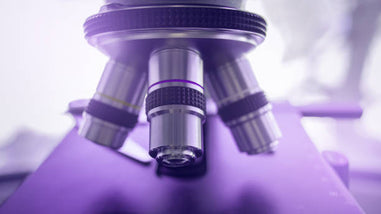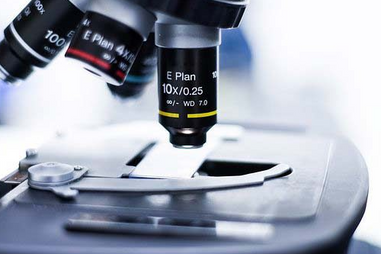- No products in the cart.
Tips for Working with Vascular Stent Materials & Shape Memory Polymers
For laboratories which manufacture vascular stents intended for patient implantation, maintaining a high standard of quality is not optional. Producing stents is a difficult process from the design table to the operating room, and only the labs equipped with the right selection of quality analysis tools will be competent to make the implantable stents which save patients’ lives.
This becomes doubly true when producing stents made from cutting edge materials like memory polymers, whose features may be unfamiliar to many laboratory workers. Labs seeking to enter the stent manufacturing business will need to understand the quirks of memory polymers as well as the best quality evaluation techniques if they want their patients downstream to succeed in recovering from their illnesses.
Memory Polymers Are Ideal For Stents
Designing and implanting stents is difficult because many of the features which are desirable for a stent to have are contradictory with each other. This means that a stent designed with a single material is unlikely to have all of the desirable properties, causing a suboptimal outcome for patients. For patients to get the best possible outcome with their stent, they need a stent which has a handful of features, including:
- Shapeability
- Flexibility
- The ability to create scaffolding for tissue regrowth
- Durability
- Removability
- Biodegradability, if necessary
The additional complication of stent design is that the stent may need to have some of these features in the operating room and a different set of features once the stent is implanted into the patient. For example, stents must be shapeable by the surgeon during the implantation process, but not so flexible that it is difficult to shape by hand.
Once implanted in the patient, however, the regrowth of the patient’s tissues can’t be allowed to reshape the stent—after all, the stent wouldn’t be very useful if the patient’s body reshaped it during the healing process. Similarly, the stent needs to be capable of acting as a scaffold for the patient’s tissues to grow into so that they can heal from the implantation surgery, but not so effective of a scaffold that the stent itself is impossible to remove in the event that the patient needs it adjusted due to the density of the new tissue growth around the stent.
Memory polymers are thus a highly effective way of working around the somewhat contradictory bill of requirements for stents. Memory polymers can be shaped into a convenient form before being implanted into the patient, where the stent will then revert to its permanent shape which was defined before implantation. Then, when the patient’s tissues regrow, the stent can be flexible so as to avoid harming the patient while still providing a limited scaffold for tissue regrowth.
While memory polymers are typically not biodegradable, the fact that they do not become completely overgrown with new tissues is advantageous because it means that surgeons can extricate a memory polymer stent without causing excessive bleeding.
Common Tools for Quality Analysis of Vascular Stent Materials
Stents need to maintain the highest quality standards whether or not they are made from memory polymers. Because of how important stent quality control is, there are several ways to assess the quality of a stent, including:
- Spot inspection with amicroscope
- Automated stent scanning cameras
- Electron spectroscopy
Importantly, these tools for stent quality assurance can be used individually or in conjunction with one another. Furthermore, each of these tools can be used in stents which are made from memory polymer or from other materials, so they may be useful for other laboratory tasks as well. Each tool has a specific set of strengths and weaknesses that labs interested in creating stents need to understand.
Spot Inspection
Spot inspection with a microscope is perhaps the simplest quality analysis method for stents because all it requires is a standard light microscope and close attention from a laboratory worker. During spot inspection, the stent is held underneath the microscope and examined closely on all of its surfaces individually. Laboratory workers performing the spot check look for any inclusions or anomalies in the texture of the polymer to ensure that it is free of any defects or blemishes which might harm a patient.
The best feature of spot inspection is that most laboratories already have the infrastructure necessary to start spot checking their stents from the moment they start production—but what they might not have enough personnel hours to check all of their stents in a reasonable amount of time. Spot checking is extremely time-consuming, which means that its low up-front price for the microscope can be very deceptive. Furthermore, spot checking is prone to human error—a tired technician might easily miss a small fault in the stent if they’ve been on quality control duty for hours.
Scanning Cameras
Automated stent scanning cameras are a relatively new addition to the stent quality analysis scene. In short, automated stent scanning cameras utilize a mechanical platform, a light microscope, and a camera rig to take hundreds of pictures of every angle of a stent. This process is then repeated when the stent is made to change shape. Then, a computer program analyzes the photographs to assess whether the stent has any blemishes or defects which may be harmful to a patient, informing the lab staff of the result.
Stent scanning cameras are extremely expensive, but they overcome a majority of the problems with the spot check method by being automated. While stent scanning cameras are not necessarily perfect, over a long period of time it is highly likely that they miss fewer problems than a human performing a spot check would. Stent scanning cameras also free up personnel to perform other work, which is invaluable in small labs. 
Pictured: Nitinol Wire
Electron Spectroscopy
Electron spectroscopy is the luxury option for quality analysis of memory polymer stents. During electron spectroscopy, laboratory staff examine the surface of the stent as it appears at a microscopic scale. Looking at the stent’s surface at microscopic scale immediately betrays any impurities in the stent’s material while also alerting staff to the presence of microstructural problems with the stent. Thus, electron spectroscopy is by far the most comprehensive method to analyze stents, even if it does not necessarily provide any special advantage when examining memory polymer stents in comparison to stents made from traditional materials.
The massive downsides of electron spectroscopy are that it is extremely expensive and also extremely slow. Electron spectroscopy requires an abundance of hands-on personnel time, not to mention extensive maintenance and training. What’s more, electron spectroscopy may not necessarily expose the most obvious defects of a memory polymer stent, such as a jagged edge which might harm a patient. Because the image generated by the electron spectroscopy is intended for analysis of micro-scale phenomena, macro-scale phenomena like a jagged stent edge will be too large to see.
Reaching Stent Quality Success
Laboratories seeking to produce memory polymer stents will find that they experience the best results when they use a combination of different quality analysis methods. By integrating automated analysis with the occasional spot check and the odd spectroscopic analysis, labs can build a comprehensive understanding of how their stents are influenced by the manufacturing process. Similarly, by working with an experienced supplier who understands the needs of a stent manufacturing group, laboratories will ensure that they never need to look far for essential supplies.
For over 40 years, Lab Pro has been committed to providing equipment for companies which manufacture implantable products in California and worldwide. Come visit the biggest Lab Supply showroom in California, or contact us online or at 888-452-2776.












































